With Bell Let’s Talk Day bringing mental health to the forefront of public conversation on January 30th, there is no better time than the present to foster good mental health through the creation of positive, mindful classrooms. This collection of new titles includes resources for teachers looking to develop positive practices and raise a generation of well-rounded and resilient students, as well as resources for young readers, encouraging personal growth through the cultivation of mindfulness and self-awareness.
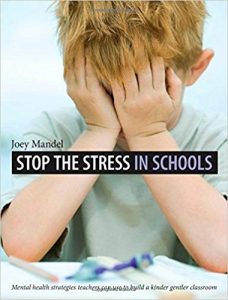 Stop the Stress in Schools: Mental health strategies teachers can use to build a kinder, gentler classroom, by teacher and educational consultant Joey Mandel, opens by describing the physical and emotional turmoil of young students encountering stressful classroom environments. By helping students to cope and manage their emotions, and by encouraging teachers to create compassionate and caring classrooms, Mandel outlines the ways in which healthier and more positive learning environments can be created. The book explores five areas of classroom development: Creating a Positive Classroom, Giving Positive Response, Awareness, Acceptance, and Ability to Manage Stress. Each of these five areas are then broken down to address themes of self-development for teachers, students, and building healthier relationships with others (considering both teachers’ relationships with students and students’ relationships with students). Throughout the book, Mandel offers practical advice and examples related to the cultivation of a positive classroom environment. For more on creating a positive classroom, check out Mandel’s previous book, Moment to Moment: A positive approach to managing classroom behaviour.
Stop the Stress in Schools: Mental health strategies teachers can use to build a kinder, gentler classroom, by teacher and educational consultant Joey Mandel, opens by describing the physical and emotional turmoil of young students encountering stressful classroom environments. By helping students to cope and manage their emotions, and by encouraging teachers to create compassionate and caring classrooms, Mandel outlines the ways in which healthier and more positive learning environments can be created. The book explores five areas of classroom development: Creating a Positive Classroom, Giving Positive Response, Awareness, Acceptance, and Ability to Manage Stress. Each of these five areas are then broken down to address themes of self-development for teachers, students, and building healthier relationships with others (considering both teachers’ relationships with students and students’ relationships with students). Throughout the book, Mandel offers practical advice and examples related to the cultivation of a positive classroom environment. For more on creating a positive classroom, check out Mandel’s previous book, Moment to Moment: A positive approach to managing classroom behaviour.
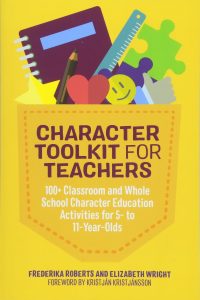 Classroom activities that foster the development of positive and healthy students can be found in Frederika Roberts’s and Elizabeth Wright’s Character Toolkit For Teachers: 100+ Classroom and Whole School Character Education Activities for 5- to 11-Year-Olds. The book is broken down into two sections; the first, Character Education, features a series of activities that promote gratitude, kindness, teamwork, love of learning, and self-reflection. The second, Positive Education, features activities related to happiness and positive emotions, mindfulness and meditation, physical wellbeing, positive relationships, and goal setting and achievement. Each quality discussed is explored through different activities designed for both individual classroom use and schoolwide participation. These activities are thoroughly outlined and contain recommendations for appropriate age groups, time allotments, and necessary materials. Roberts and Wright are the co-founders of RWS (Resilience Wellbeing Success) in the UK, from which the Character Toolkit was born.
Classroom activities that foster the development of positive and healthy students can be found in Frederika Roberts’s and Elizabeth Wright’s Character Toolkit For Teachers: 100+ Classroom and Whole School Character Education Activities for 5- to 11-Year-Olds. The book is broken down into two sections; the first, Character Education, features a series of activities that promote gratitude, kindness, teamwork, love of learning, and self-reflection. The second, Positive Education, features activities related to happiness and positive emotions, mindfulness and meditation, physical wellbeing, positive relationships, and goal setting and achievement. Each quality discussed is explored through different activities designed for both individual classroom use and schoolwide participation. These activities are thoroughly outlined and contain recommendations for appropriate age groups, time allotments, and necessary materials. Roberts and Wright are the co-founders of RWS (Resilience Wellbeing Success) in the UK, from which the Character Toolkit was born.
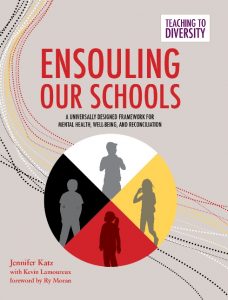 For Canadian-specific approaches to fostering positive classrooms and good mental health, Ensouling Our Schools: A Universally Designed Framework for Mental Health, Well-Being, and Reconciliation, by Jennifer Katz with Kevin Lamoureaux, is a unique and timely guide to developing mental, spiritual, and emotional health in the classroom with a consideration of Indigenous approaches to these topics, addressing the TRC Calls to Action. As described in chapter one, “an ensouled school recognizes the needs of all human beings for connection, appreciation, respect, and meaning.” This book analyzes current research related to mental health and holistic classroom environments and provides a number of lesson ideas for teachers eager to make positive changes in their classrooms. Katz is a teacher-turned-academic involved in advocacy for inclusive education, and Lamoureaux is the Education Lead for the National Centre for Truth and Reconciliation.
For Canadian-specific approaches to fostering positive classrooms and good mental health, Ensouling Our Schools: A Universally Designed Framework for Mental Health, Well-Being, and Reconciliation, by Jennifer Katz with Kevin Lamoureaux, is a unique and timely guide to developing mental, spiritual, and emotional health in the classroom with a consideration of Indigenous approaches to these topics, addressing the TRC Calls to Action. As described in chapter one, “an ensouled school recognizes the needs of all human beings for connection, appreciation, respect, and meaning.” This book analyzes current research related to mental health and holistic classroom environments and provides a number of lesson ideas for teachers eager to make positive changes in their classrooms. Katz is a teacher-turned-academic involved in advocacy for inclusive education, and Lamoureaux is the Education Lead for the National Centre for Truth and Reconciliation.
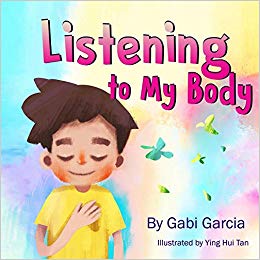 Young readers can explore themes of mindfulness and well-being on their own or during storytime with an adult in the sweetly illustrated book Listening to My Body, by Gabi Garcia with illustrations by Ying Hui Tan. On its very first page, this book describes itself as “A guide to helping kids understand the connection between sensations (what the heck are those?) and feelings so that they can get better at figuring out what they need.” This book explores the relationship between children’s physical experiences in their bodies and their emotional states, highlighting a range of feelings from “ants in your pants” to a rapid heart beat to happiness and the calm state that follows a few deep breaths. At the bottom of each page are “Let’s Practice” activities in which children can practice identifying what they are feeling and what they need, inviting them to recognize what makes them feel better, and to incorporate more of these activities and practices into their lives. Downloadable resources related to the book can be found at www.listeningtomybody.com.
Young readers can explore themes of mindfulness and well-being on their own or during storytime with an adult in the sweetly illustrated book Listening to My Body, by Gabi Garcia with illustrations by Ying Hui Tan. On its very first page, this book describes itself as “A guide to helping kids understand the connection between sensations (what the heck are those?) and feelings so that they can get better at figuring out what they need.” This book explores the relationship between children’s physical experiences in their bodies and their emotional states, highlighting a range of feelings from “ants in your pants” to a rapid heart beat to happiness and the calm state that follows a few deep breaths. At the bottom of each page are “Let’s Practice” activities in which children can practice identifying what they are feeling and what they need, inviting them to recognize what makes them feel better, and to incorporate more of these activities and practices into their lives. Downloadable resources related to the book can be found at www.listeningtomybody.com.
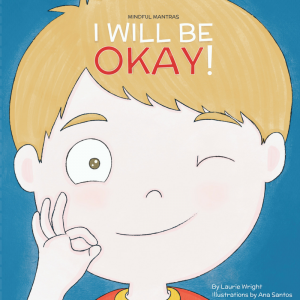 I Will Be Okay, by Laurie Wright with illustrations by Ana Santos, is another picture book designed for young learners. As a part of the Mindful Mantras series, this book explores a number of situations that might be challenging for children, addressing themes of anxiety and worry and meeting them with positive solutions that reinforce the message, “I will be okay.” The story ranges from situations in which the main character feels confused, scared, anxious, angry, sad, grumpy, and worried, but highlights the things that he can do to make himself feel better, including reaching out to people that he loves and participating in activities that he enjoys. Ultimately, he decides that he will be okay, no matter what happens. For more in the Mindful Mantras series, see Wright’s earlier book, I Can Handle It.
I Will Be Okay, by Laurie Wright with illustrations by Ana Santos, is another picture book designed for young learners. As a part of the Mindful Mantras series, this book explores a number of situations that might be challenging for children, addressing themes of anxiety and worry and meeting them with positive solutions that reinforce the message, “I will be okay.” The story ranges from situations in which the main character feels confused, scared, anxious, angry, sad, grumpy, and worried, but highlights the things that he can do to make himself feel better, including reaching out to people that he loves and participating in activities that he enjoys. Ultimately, he decides that he will be okay, no matter what happens. For more in the Mindful Mantras series, see Wright’s earlier book, I Can Handle It.
All of these books and more can be found on the New Titles shelf on the ground floor of the OISE Library.
